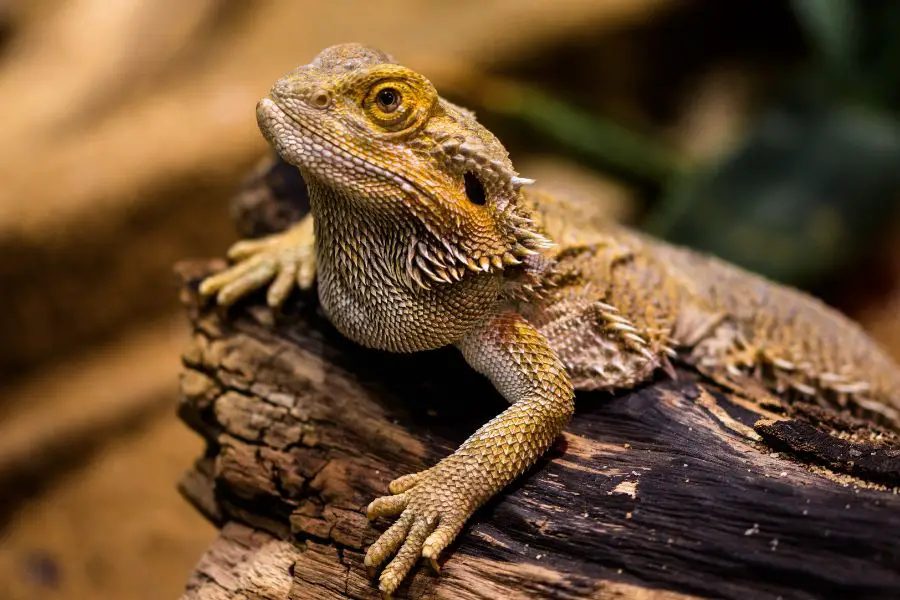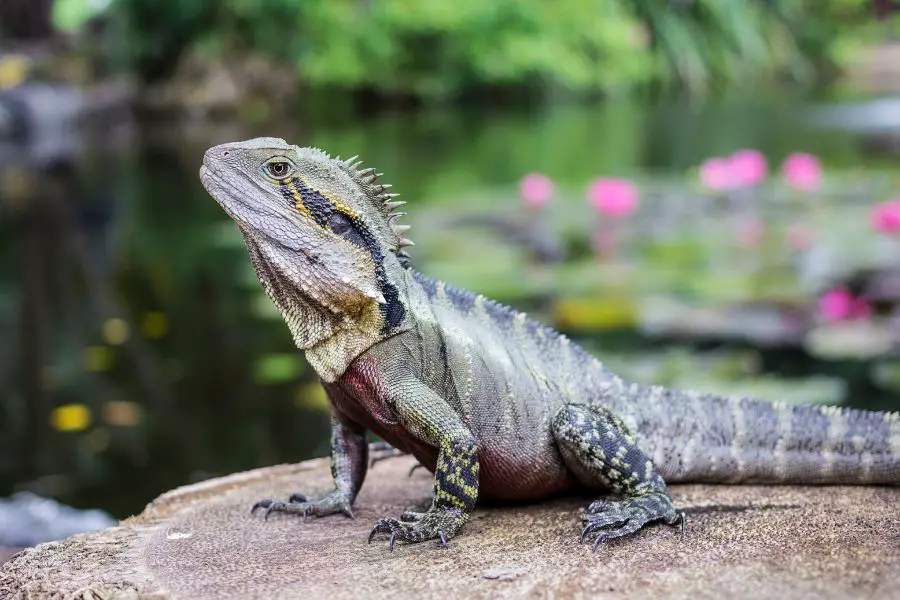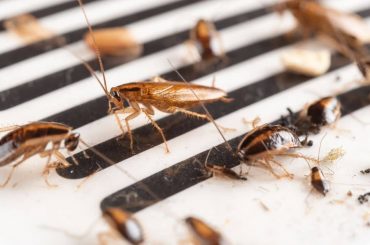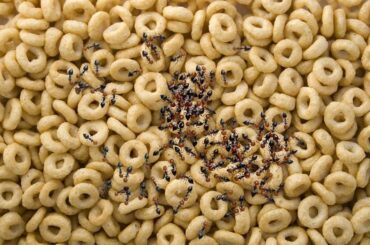If you’ve ever had the displeasure of sharing your living space with uninvited lizard guests, you’re not alone.
Lizards can be a common nuisance in many households, but fear not, for we have compiled a comprehensive guide on how to get rid of lizards. In this article, we will provide you with effective methods, tips, and strategies to ensure your home remains lizard-free.

Understanding Lizard Behavior
Before diving into the methods of getting rid of lizards, it’s essential to understand their behavior.
Lizards are cold-blooded creatures that are often attracted to warm and humid environments. They seek shelter, food, and water, making your home an attractive place for them to reside. Knowing this, we can devise strategies to deter them effectively.
- Warmth and Shelter: Lizards are cold-blooded creatures that seek warmth. During colder seasons or in the evenings, they may enter your home in search of a cozy and temperature-regulated environment.
- Food Source: Lizards are insectivores, and if your home has an insect problem, it can attract lizards. They come indoors to hunt for small insects, spiders, and other arthropods.
- Water: Lizards need water to survive. If there are water sources in your home, such as leaky pipes or dripping faucets, lizards might enter in search of hydration.
- Hideaway: Lizards are naturally reclusive and like to hide in small, dark spaces. Cluttered or less-frequented areas of your home can be attractive to them for shelter and safety.
- Proximity to Natural Habitats: If your home is close to natural habitats or has gardens, parks, or trees nearby, it’s more likely to attract lizards. They might wander in from these outdoor areas.
- Attracted to Light: Lizards are often drawn to light sources, especially at night. They might be lured inside if you leave your lights on.
- Unsealed Entry Points: Small gaps, cracks, or openings in doors, windows, walls, or vents can serve as entry points for lizards. They can slip through these openings easily.

How to Get Rid of Lizards
1. Seal Entry Points
The first step in preventing lizards from entering your home is to seal any potential entry points. Lizards can slip through tiny cracks and holes, so inspect your doors, windows, and walls for gaps.
Use caulk or weather stripping to seal these openings. Additionally, ensure that screens on windows and vents are in good repair.
2. Declutter Your Home
Lizards are drawn to cluttered spaces where they can hide and find insects to eat. Keep your home tidy by eliminating unnecessary clutter, especially in areas like basements and garages.
Regular cleaning and organization can deter lizards from making your home theirs.
3. Reduce Insect Attraction
Lizards are opportunistic feeders and often prey on insects. To reduce their food source, take measures to control insect populations.
This can include using insect repellents, keeping food sealed, and maintaining proper sanitation.
4. Natural Repellents
a. Peacock Feathers
Peacock feathers have long been considered an effective natural deterrent for lizards. The vivid and intricate “eye” patterns on these feathers are believed to unsettle lizards and make them wary of approaching.
Lizards are instinctively cautious creatures, and the eye-like patterns on peacock feathers trigger their fear response. By placing a few peacock feathers strategically around your home, particularly near entry points where lizards tend to sneak in, you create a visual barrier that discourages them from entering.
This method is not only aesthetically pleasing but also a humane and eco-friendly approach to lizard control.
b. Garlic and Onion
Garlic and onion are known for their pungent and distinctive odors, which can serve as a natural deterrent to lizards. Lizards rely heavily on their sense of smell to navigate their surroundings, and the strong scents of these kitchen staples disrupt their comfort.
To employ this method, simply slice or crush cloves of garlic or onion and place them in areas where lizards are commonly seen. This could be under sinks, near windows, or along entry points. The lingering smell will discourage lizards from venturing too close, making your home less attractive to them.
c. Naphthalene Balls
Naphthalene balls, often recognized as mothballs, are a widely used repellent for various pests, including lizards. These small, white, round balls contain naphthalene, a substance that emits a strong odor that is highly unpleasant to lizards.
By strategically placing naphthalene balls in problem areas, such as under sinks, in corners, or near potential entry points, you create an environment that lizards find inhospitable. The distinctive odor masks the scents that attract lizards and can effectively deter them from residing in your home.
Naphthalene balls are a convenient and long-lasting solution for lizard control, but ensure they are used in well-ventilated areas and out of reach of children and pets.
d. Eggshells
Lizards have a strong aversion to the texture of crushed eggshells. They are naturally averse to sharp and abrasive surfaces, and when eggshells are crushed, they create an uncomfortable and sharp texture that lizards avoid.
To use eggshells as a natural deterrent, start by collecting and thoroughly cleaning eggshells from your kitchen. Once they are dry, crush them into small pieces and then generously sprinkle them around the perimeter of your home, especially in areas where you’ve noticed lizard activity.
This barrier of crushed eggshells creates an effective and eco-friendly defense against lizards. They will think twice before crossing this uncomfortable path.
e. Coffee Grounds
Used coffee grounds have a potent scent that can serve as a natural lizard deterrent. Lizards depend on their acute sense of smell to locate food and navigate their environment.
The strong aroma of coffee grounds, while pleasant to humans, can be overwhelming for lizards. To utilize this method, spread the coffee grounds in the corners of your rooms, along window sills, and near entry points where lizards may attempt to gain access.
The lingering coffee scent creates an inhospitable environment for lizards, deterring them from invading your space.
f. Cucumber Slices
Cucumbers emit a natural odor that lizards find highly unpleasant. Lizards rely on their keen sense of smell to detect potential threats and prey, and the scent of cucumbers is a major turn-off for them.
To implement this natural repellent, simply slice cucumbers and place them strategically in areas where lizards are frequently seen. The scent of the cucumbers acts as a deterrent, making lizards less likely to approach.
This approach is not only effective but also safe for humans and pets, making it a popular choice for those looking to keep their living spaces lizard-free.
g. Tabasco Sauce
Tabasco sauce, when diluted with water, can become a potent lizard repellent. The fiery heat of the sauce combined with its strong aroma is highly distressing for lizards.
To use Tabasco sauce as a repellent, mix one part Tabasco sauce with three parts water, creating a solution that is less intense but still effective. Spray this solution around potential entry points and areas where lizards tend to congregate.
The pungent smell and the fiery taste will discourage lizards from venturing close to these areas. This method offers a proactive and humane approach to keeping lizards out of your home.

5. DIY Traps
If you have lizards inside your home, you can set up DIY traps. One effective method is to use sticky traps, which are readily available in stores. Place these traps in areas frequented by lizards, and they will get stuck to the adhesive surface.
6. Professional Pest Control
If your lizard problem is severe or persistent, it may be best to seek professional pest control services. Experts can assess your situation and apply appropriate treatments to eliminate lizards from your home.
Conclusion
In summary, getting rid of lizards in your home requires a combination of preventative measures, natural repellents, and possibly professional assistance. By sealing entry points, decluttering, reducing insect attraction, and using natural repellents, you can make your home an unwelcome place for these reptiles.
We hope this comprehensive guide has been helpful in addressing your lizard problem and maintaining a lizard-free living space.
Read Next: How To Get Rid Of Moles In Yard : Natural and Eco-Friendly Ways





